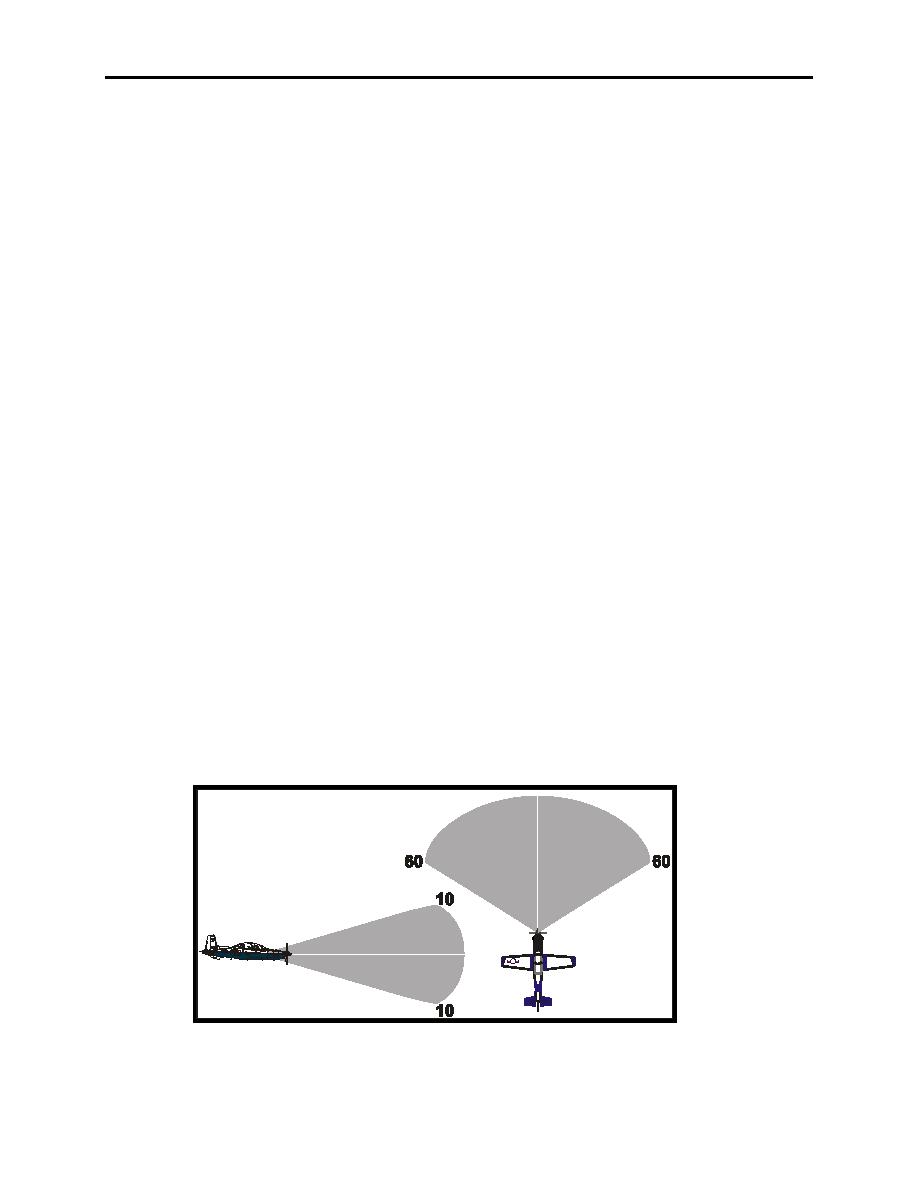 |
|||
|
|
|||
|
Page Title:
Figure 3-1 See And Avoid Doctrine |
|
||
| ||||||||||
|
|  CHAPTER THREE
T-6A CONTACT
302.
SEE AND AVOID DOCTRINE
A sharp lookout for other aircraft must be maintained at all times to avoid the possibility of
collision, especially in the training environment. This doctrine is your best defense against a
midair collision. It is imperative you not only divide attention between controlling the aircraft by
outside visual references and flight instruments, but be observant for other aircraft. For visual
flight, your scan should be directed outside the cockpit at least 80% of the time! Furthermore,
correctly determining attitude in relation to the visible horizon keeps your eyes outside the
aircraft and aids in clearing. Avoid getting fixated or head down in the cockpit.
Statistics taken from the April 1983 Aircraft Owners and Pilots Association's Air Foundation
Safety Report reveal some interesting points concerning midair collisions. Nearly all midair
collisions occur during daylight hours in visual meteorological conditions (VMC). Most midairs
occur within five miles of an airport, in the areas of greatest traffic concentration, and usually on
warm weekend days. Closing speed (rate at which two aircraft come together) often is relatively
slow, usually much slower than the airspeed of either mishap aircraft. The majority of midair
collisions are the result of a faster aircraft overtaking and striking a slower one.
The report also revealed some interesting information regarding vulnerabilities of the human eye.
The eye, and consequently vision, is vulnerable to just about everything (i.e. dust, fatigue,
emotion, germs, fallen eyelashes, age, optical illusions, and residual alcoholic content).
Atmospheric conditions, sunlight, windscreen distortion, too much/too little oxygen,
acceleration, glare, heat, lighting, and aircraft design all affect our vision.
Another focusing problem occurs on drab, hazy days when no distinct horizon is visible. If there
is little or nothing to focus on, we do not focus at all. We experience something known as
empty-field myopia; we stare but see nothing, even opposing traffic. Compounding our clearing
shortcomings is the fact that at a distance, an aircraft on a collision course will appear to be
motionless. It will remain in a seemingly stationary position, without appearing to move or grow
in size for a relatively long time and then suddenly bloom into a huge mass filling the canopy.
This is known as blossom effect. We need motion or contrast to attract our eyes' attention.
Figure 3-1 See And Avoid Doctrine
3-2
FUNDAMENTAL CONCEPTS
|
|
Privacy Statement - Press Release - Copyright Information. - Contact Us |